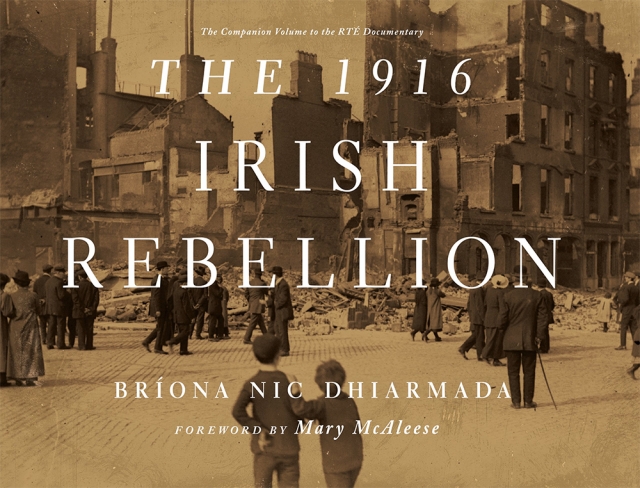The 1916 Irish Rebellion
Book Review

The 1916 Irish Rebellion by Briona Nic Dhiarmada (Cork University Press), 2016 205pp., £19.99 hard, ISBN 978-1-78205-191-6
In the centenary of the Easter Rising, it is hardly surprising that there has been an upsurge of publications and re-publications on this seminal event in Irish history. Like the rebellions in 1798, 1848 and 1867, the Easter Rising was a military debacle as poorly armed, largely militarily inexperienced rebels took on the might of the British Empire. Yet, unlike the earlier rebellions, Britain’s inept and unnecessarily ferocious response ended any sense at all that Ireland could be anything other than an independent country as an entire nation turned away in revulsion from the British artillery and executions
The 1916 Irish Rebellion is the companion book to a three-part documentary series to be broadcast worldwide in 2016 and now available from Amazon.uk ay £11.83. Narrated by Liam Neeson, the documentary, entitled 1916 The Irish Rebellion, and its related seventy-minute version are initiatives of the Keough-Naughton Institute for Irish Studies at the University of Notre Dame. The series will broadcast on RTE and American Public Television. In the first part of the book, Nic Dhiarmada surveys Ireland’s place as part of the British Empire in the decades leading up to 1916, with special emphasis on earlier Irish movements to achieve independence or at least some measure of self-governance. She then outlines the events leading to the Easter Rebellion of 1916, including the crucial events of Thursday through Saturday prior to Easter. The second part details the events of the Easter Rising and the week of violent fighting, ending in the failure of the armed insurrection in Dublin. Through the use of graphics and contributions from military historians, viewers are provided with both an insight into particular locations, such as the General Post Office, as well as a clear, overall view of the state of play in Dublin. Her third part discusses the fate of the leaders of the Rising, many of whom were immediately court-martialled and executed. Nic Dhiarmada suggests that the Irish Rising, its ideals and the subsequent election of members of the nationalist movement to prominent government offices were instrumental to the later creation of the sovereign Republic of Ireland, as well as an inspiration to anti-colonialist insurrections elsewhere in the world.
The 1916 Irish Rebellion includes a historical narrative. For teachers, this book will prove invaluable with its lavish spread of contemporary images and photographs; and a rich selection of sidebar quotations from contemporary documents, prisoners’ statements, and other eyewitness accounts to capture the experiences of nationalists and unionists, Irish rebels and British soldiers and Irish Americans during the turbulent events of Easter Week, 1916. This is an excellent book…if you buy one book on 1916, then I would strongly suggest this. It brings new understanding to the complicated interconnections between Britain, Ireland and the United States that have continued to have significance up to and including the Irish peace process.

